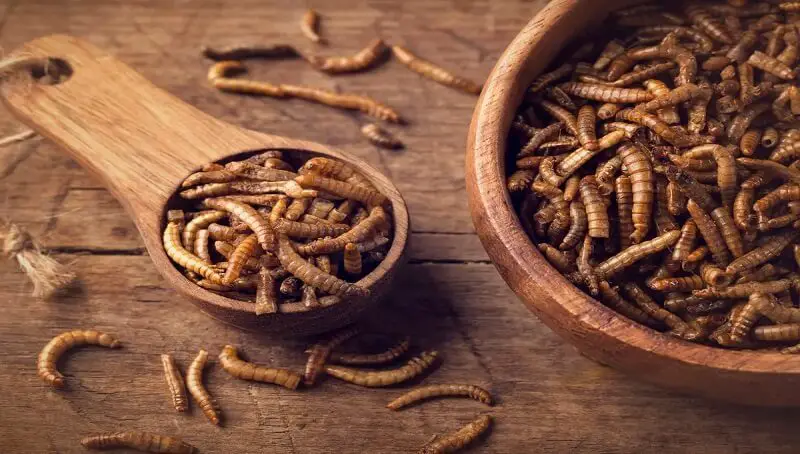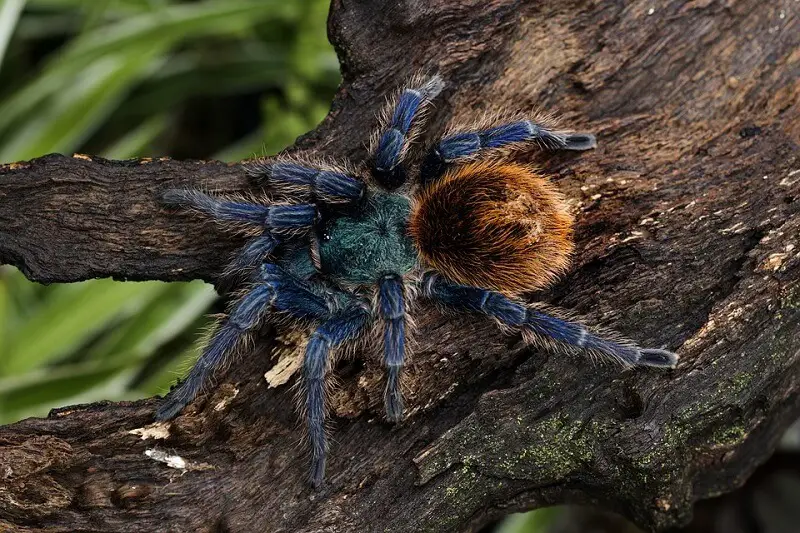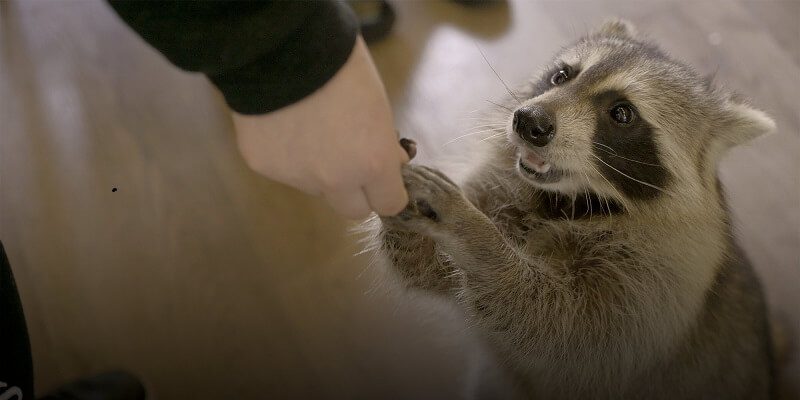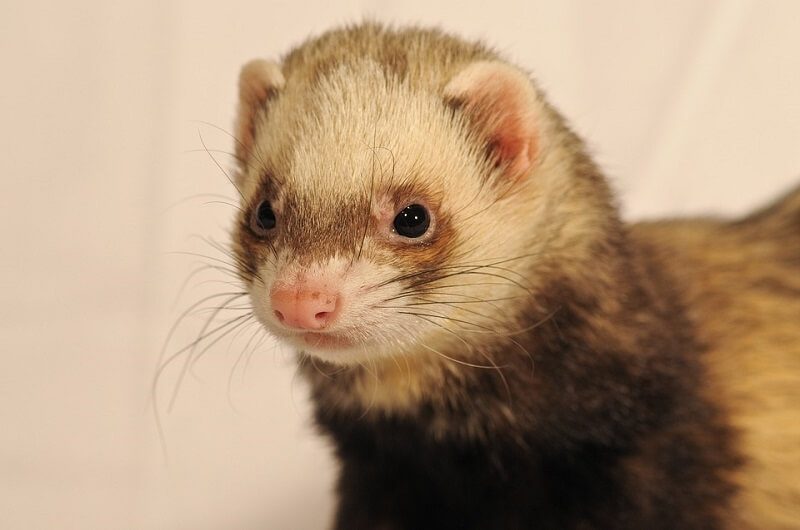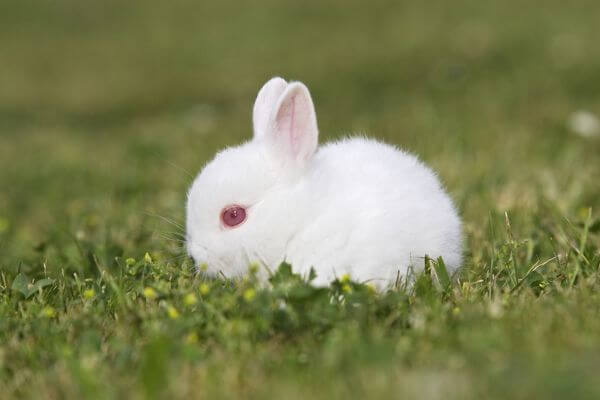Mealworms are considered a great food for reptiles, fish, but also chickens. They are a type of beetle. Some people also like to eat them and they are said to have a nutty flavor.
Mealworms will generally go through four stages within one lifecycle: they will first be eggs, then larvA, then pupa, and then they will finally reach their adult form.
These eggs are usually laid in batches of 100 or more and will be white and very small. These mealworms will see their biggest growth during their larva stage when they can reach a size of 3 cm. Before becoming a pupa, they will have to go through three different molts.
The pupa stage represents the period in which a mealworm will go through the necessary changes to become an adult beetle. For the mealworm to go through the full life-cycle from an egg to its adult form, it shouldn’t take more than two weeks. The lifespan of an adult mealworm will be of around 2 years.
What do mealworms turn into?
Mealworms will keep their larval form until their temperature will drop. As soon as they reach the right temperature, they will go into their pupa form, in a state similar to hibernation. You will be able to identify pupae bu their C shapes, a yellow to white color, and considerable size when compared to their larva form. As time moves on, they will become darker and darker, in the end turning into beetles.
The time needed for a mealworm to become an adult and reach the completion of its life cycle is not fixed and will usually depend on the food it has access to and the general temperature in the surrounding environment.
A clip of the whole life cycle
Detailed Stages of the Mealworm’s life cycle
Egg phase
The life cycle of any mealworm will begin in late spring to early summer, when females will go through their breeding stage, looking for a dark location where to lay their eggs.
You might also like my article about grubs.
If they reproduce inside your home, you shouldn’t be surprised to find their eggs in flour, meal, or cereal containers. One female can lay around 300 pea-shaped, white-colored eggs each time, but will usually lay them in batches of around 100.
The Larva phase
During the next phase, these mealworm eggs will hatch, releasing small larvae. The mealworms that are released from eggs will have a segmented body or a whitish, milk-like color.
With the passing of time, the mealworm color will change towards a more yellow to brown one, and it will continue to grow until it reaches about one inch in size. It will then mold (shed its skin) a few times, becoming very dangerous to the foods it gets in contact with.
The Pupa phase
Mealworms will wait for their temperature to drop before turning into their pupa form. This form also comes with a hibernation stage. These pupae are usually C-shaped, yellow to white in color, and considerably bigger than the larvae. As time moves on, they get darker and darker, in the end becoming adult beetles.
The Adult phase
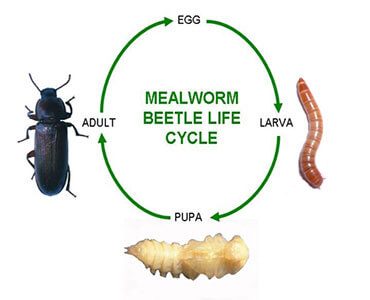 During the spring months, the adult beetles start to pop up, changing their colors to yellow and black after just a few days.
During the spring months, the adult beetles start to pop up, changing their colors to yellow and black after just a few days.
Although beetles that come out of mealworms will have pretty small wings and will travel pretty slowly, they can fly over very long distances, which enables them to always infest new areas.
Although beetles have a maximum lifespan of around 12 months, most of them will live anywhere between 3 and 12 months.
You will usually have a hard time seeing all of the lifecycles of a beetle because they will often lay their eggs around grain or items that contain grain, which will hide them from sight until they hatch.
You will only see them when they become larvae, due to their 1-inch sizer and the fact that they move.
Mealworms as fish bait or pet food
If you’ve ever been to a pet shop you surely noticed that they sell mealworms most of the time.
Mealworms are a very nutritive food for different animals, birds, and even reptiles. They can also be placed in bird feeders during nesting seasons while wild birds have babies to feed.
You can use mealworms as bait for fishing as well.
You can buy them from most petshops, but also from online stores and you can even order them from independent retailers. You will usually get them with bran or oats as bedding, in a bin with a lid.
Some commercial growers might use a hormone to keep the mealworm in its larval state and help it grow longer than 2 cm.
